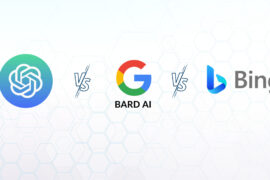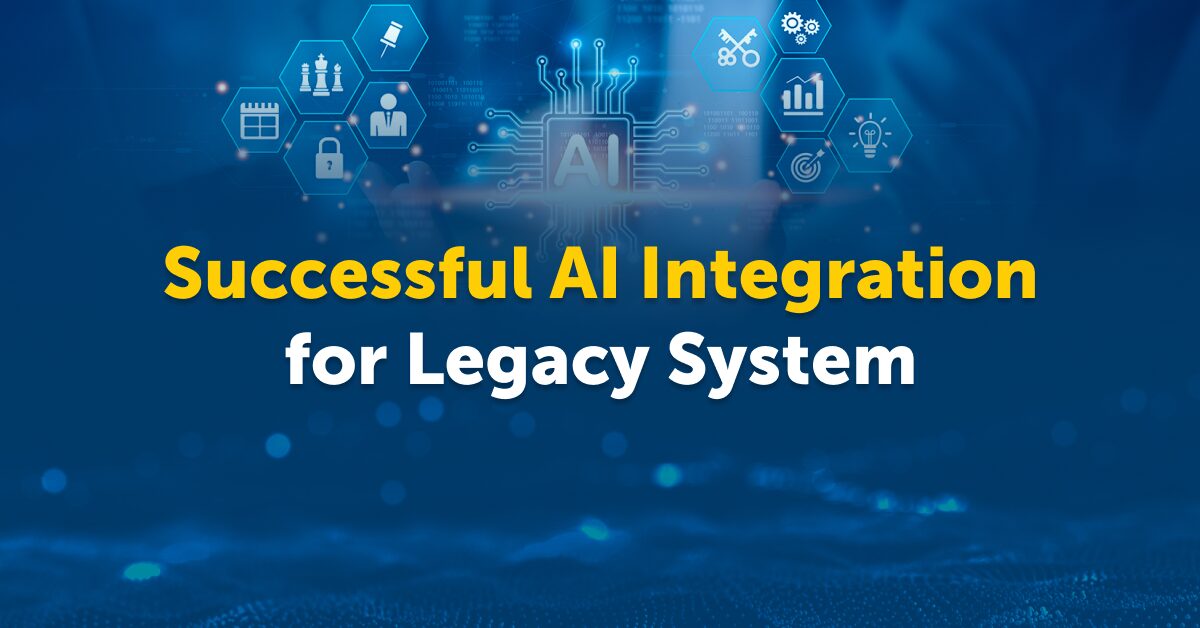ChatGPT vs Bard vs Bing Chat

There is a growing demand for real-time conversational chatbots, and generative AI technologies such as ChatGPT, Bard and Bing Chat are becoming increasingly popular. These chatbots can transform customer service, marketing, and other aspects of the modern enterprise, so how do they compare?
This Blog will compare and contrast the three main generative AI chatbot systems: ChatGPT, Bard and Bing Chat. We will examine their similarities and differences regarding features, cost-efficiency, accuracy, scalability and more. We will then explore generative AI and large language models more before discussing how businesses can capitalize on this opportunity to use these new technologies.
Introducing Generative AI and Large Language Models (LLM)
Generative AI is an advanced form of artificial intelligence (AI) that produces human-like outputs. It has been used in creative activities such as writing music, literature, and animation. It also has many practical applications, like voice recognition and natural language processing (NLP). Generative AI uses large language models (LLMs), sets of parameters that allow machines to understand and generate natural language. These models are trained on vast amounts of data, such as text documents, audio files, images, and videos.
The use of generative AI has grown in popularity recently due to its ability to produce more human-like results compared to other AI technologies. For example, ChatGPT, Bard, and Bing Chat are all generative AI chatbots containing LLMs that enable them to understand user input and generate responses in a conversational way. By leveraging these technologies, businesses have the opportunity to engage with customers in a more human-like way.
To bring generative AI chatbots into the enterprise space, companies need an experienced partner who can harness the power of these technologies for business applications.
Fusemachines is an ideal partner for companies looking to use LLMs for their enterprise solutions, as we have expertise in developing sophisticated yet user-friendly chatbot solutions tailored specifically for business needs.
What is ChatGPT?
ChatGPT is a generative AI chatbot powered by the GPT-3 natural language processing (NLP) engine from OpenAI. It can recognize and understand context, enabling it to generate more sophisticated and meaningful responses than chatbots. ChatGPT has the most average monthly users (100 million+) of the major chatbots out there.

What is Bard?
Bard is a conversational AI platform from Google that leverages natural language processing (NLP) to create chatting experiences tailored to specific queries. Its advanced AI technology can interpret context and offer more nuanced answers than traditional chatbots. Bard also offers features like automated moderation and sentiment analysis for more accurate customer intelligence. Bard currently has 13 million monthly users.
What is Bing Chat?
Bing Chat is an open-source platform from Microsoft for creating conversational AI experiences with natural language processing (NLP). It uses unique algorithms to enable natural dialogs between AI and users, providing instantaneous responses for easy and difficult questions. Bing Chat uses deep learning technologies to continually improve its accuracy based on user interactions over time.
ChatGPT vs Bard vs Bing Chat
ChatGPT, Bard, and Bing Chat all use state-of-the-art generative AI technologies to understand language and write natural conversations. In layman’s terms, they can be thought of as “chatbot assistants”—automated bots that understand questions, provide answers and help people solve problems.
There are a few differences between the three chatbot assistants. Regarding performance, ChatGPT has higher natural language understanding capabilities than Bard or Bing Chat. It also has better knowledge comprehension capabilities. ChatGPT also has a system of user feedback loops that refine its responses over time-based.
ChatGPT’s architecture uses transformer-based pre-trained models to generate text. It works by predicting the next word in a conversation and works best when given one word at a time as input.
Bard’s architecture is based on Recurrent Neural Networks (RNNs), connecting modules in a forward-moving chain, to process inputs one step at a time. Bard works well when given multiple words or sentences as input, making it better suited for more complex conversations.
Bing Chat’s architecture uses both transformer-based text generation models and natural language understanding models from Microsoft Cognitive Services. It works best when there is an understanding of context or intent behind what has been said, allowing for more natural interactions and longer conversations than other chatbots.
Overall, all three chatbot assistants offer unique advantages for enterprises looking to leverage advanced AI technologies in their conversational interfaces.
Fusemachines has experience deploying these platforms and can help leverage them to develop custom solutions for enterprises across industries. Click here to schedule a free conversation with our experts today.
Advantages of a Generative AI Model for Businesses
Leveraging generative AI in businesses is beneficial in many ways. Generative AI models, such as ChatGPT, Bard, and Bing Chat, generate unique and personalized conversations with customers, resulting in more engaged audiences.
These models are able to understand natural language and respond quickly to customer inquiries without the need for human intervention. This helps improve a company’s customer service and enables them to effectively scale their customer service operations while reducing costs.
Generative AI models generate content tailored to specific preferences and interests. This ensures the relevance of content and helps increase brand engagement. By training these models on large datasets of conversations collected from diverse sources, including conversations from social media, companies can gain insights into customer behavior that may otherwise be missed.
Finally, generative AI models are able to leverage technologies such as natural language processing (NLP) and deep learning (DL) algorithms to better understand the nuances of human interaction and build more realistic conversations with customers. By leveraging these new technologies, companies can provide a more personalized experience for their customers, helping build trust in their brands.
At Fusemachines, we have developed our own proprietary solutions that leverage NLP and DL algorithms to make it easier for companies to adopt generative AI models into their business operations. Our solutions help create an engaging experience for customers while providing valuable insights into their behavior and preferences.
Click here to schedule a free conversation with our experts today.
Bottom line
Comparing the top generative AI chatbots on the market, it is evident that having a well-trained GPT-3 and a large language model is key to achieving conversational and natural AI-driven conversations. Each model has their own strengths and weaknesses, and it is up to the end user to decide which model best suits their needs. Businesses now have a unique opportunity to explore and even create their own generative AI platform tailored to their specific needs.
Fusemachines has a history of helping industry leaders build AI-driven conversational solutions with its best-in-class generative AI models, tailored to help businesses achieve their objectives.
Click here to schedule a free conversation with our experts today.
To learn more about Fusemachines, click here.


